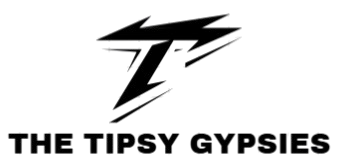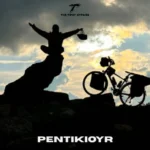What is CDiPhone?
CDiPhone is a modern concept that describes the tools, methods, and apps people use to connect compact disc (CD) content to their iPhones.
It is not an official Apple product. Instead, the term covers ways of turning old CDs into music or data files you can enjoy on an iPhone.
The idea reflects a growing interest in combining the nostalgic value of physical CDs with the flexibility of modern mobile technology.
The Rise of CDiPhone
CD collections were once the heart of music libraries. With digital streaming and wireless devices, CDs slowly moved to the background.
Yet, millions of people still own and cherish these discs. The CDiPhone concept was born out of a simple desire: to keep those memories alive in a modern form.
This approach does not need special hardware alone. It combines familiar tools like computers, apps, and sometimes adapters, with a focus on preserving high-quality music.
Why People Care About CDiPhone
Protecting Old Music Libraries
Many users have rare albums, live concert recordings, or personal mixes that exist only on CDs.
CDiPhone methods allow these collections to be digitized and safely stored on iPhones.
High-Quality Sound
CDs provide lossless audio, which often sounds better than compressed streams.
By ripping CDs to Apple Lossless (ALAC) or similar formats, listeners can enjoy richer sound on their iPhones.
Emotional Connection
For many people, CDs hold memories of family road trips, first concerts, or favorite artists.
Bringing those collections to an iPhone gives new life to old treasures.
How CDiPhone Works
Ripping CDs on a Computer
The first step is to move music from CDs to a digital format:
- Insert your CD into a PC or Mac.
- Use iTunes (Windows) or Music app (macOS) to import songs.
- Choose a format: ALAC for full quality, AAC or MP3 for smaller file sizes.
- Add the files to your library.
Ripping is recommended because iPhones cannot directly read CDs.
Syncing Music to an iPhone
After converting your CDs into digital files:
- Link your iPhone using a USB cable or enable wireless syncing to move the music across.
- Drag your newly imported music into the iPhone library.
- Enable “Sync” and your CD music will transfer directly.
This step works well for any size library.
Using Cloud Services or Apps
If you prefer, you can upload ripped files to a cloud service like iCloud Drive, Dropbox, or Google Drive.
Apps such as VLC, Evermusic, or Documents by Readdle can play music directly without using iTunes sync.
This approach works well for large collections or people who use multiple devices.
Is it possible to hook up an external CD drive straight to an iPhone?
Some users experiment with connecting an external CD drive using:
- A powered USB hub
- A Lightning-to-USB or USB-C adapter
However, iPhones do not natively read CD file systems.
You might see the drive connected, but it will not play audio files directly.
This is why ripping on a computer remains the most practical way.
Best Audio Formats for CDiPhone Workflows
When converting CDs, choose the format that best suits your needs:
- ALAC (Apple Lossless): Maintains full CD quality.
- AAC: Smaller files, very good quality, great for Apple devices.
- MP3: Smaller size, universal compatibility.
Audiophiles often choose ALAC for quality, while others prefer AAC for balance.
Extra Tools for a Smooth Experience
- VLC for iOS: Plays almost any audio format.
- Evermusic: Streams from cloud storage and organizes libraries.
- Documents by Readdle: Stores, organizes, and plays audio.
- Plex: For those who want to host their own library and stream it anywhere.
These apps make it easy to enjoy CD music on an iPhone without extra software.
Common Challenges and How to Solve Them
Storage Space
Lossless files can be large. Use cloud storage or optimize formats to manage space.
Metadata and Tags
After ripping, update song information. Proper tags make music easy to find on your iPhone.
Power Limitations for Drives
Direct CD drive connections to iPhones often fail due to power needs. Always use a computer to rip music.
User Stories: Real Impact of CDiPhone
A retired teacher digitized decades of choir performance CDs so she could share them with former students.
By ripping her collection and organizing it on her iPhone, she was able to reconnect with old friends through the music they made together.
Another example is a traveler who used CDiPhone workflows before leaving on a long road trip.
She converted her rare live CDs into ALAC files and created custom playlists, giving her offline music that didn’t rely on an internet signal.
The Future of CDiPhone
While streaming dominates today, the CDiPhone idea shows that physical media still matters.
As retro trends return, hybrid solutions that mix classic and modern approaches could grow in popularity.
Future accessories may even simplify direct disc-to-iPhone transfers.
Conclusion
CDiPhone is a concept, not a product, but it answers a very real need.
By ripping CDs and syncing files, people can preserve music that shaped their lives and enjoy it anywhere.
This combination of old and new technology helps keep personal music history alive while enjoying all the convenience of modern devices.
If you want to enjoy the same experience, start with one CD and follow the steps—you might rediscover music you love.
Frequently Asked Questions (FAQS)
Is CDiPhone an Apple device?
No. It’s a concept used by users and writers to describe workflows and tools that connect CDs to iPhones.
Can I skip the computer step?
Not easily. Direct CD playback on an iPhone isn’t supported. A computer is the simplest and most stable solution.
What format is best?
For audio quality, ALAC is best. For convenience, AAC is a good balance between quality and file size.
Does CDiPhone require special apps?
No. You can use Apple’s built‑in Music app. However, apps like VLC or Evermusic provide more flexibility.






